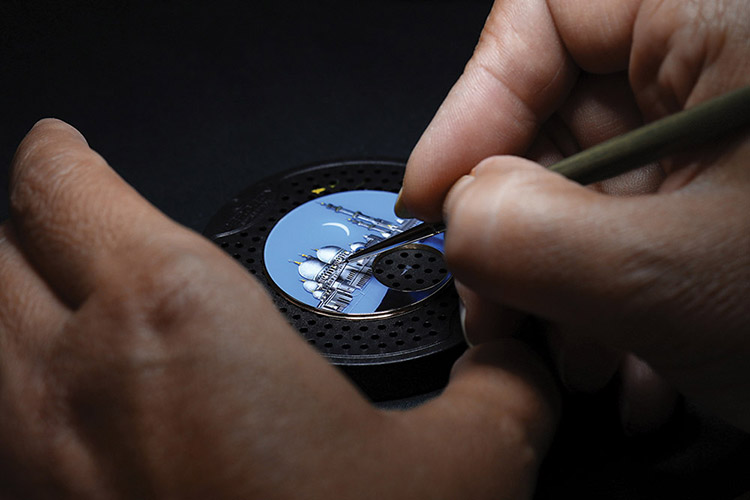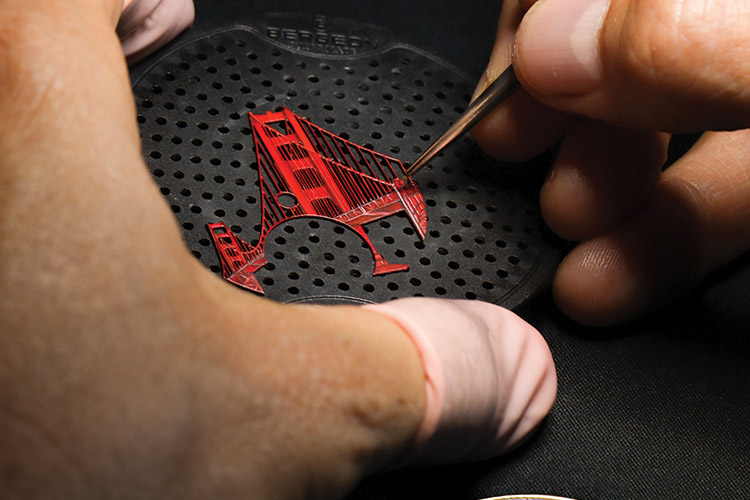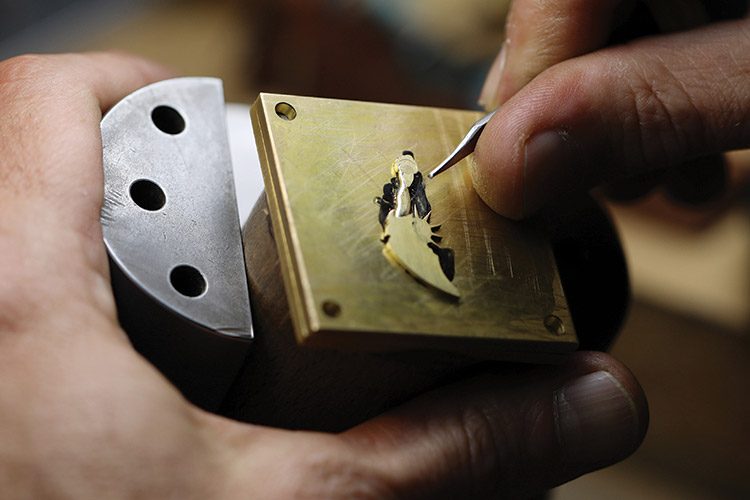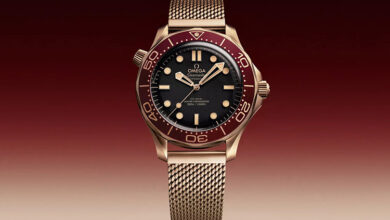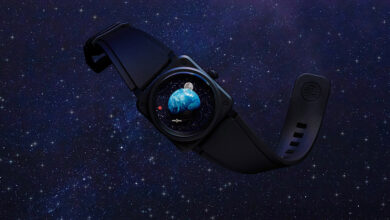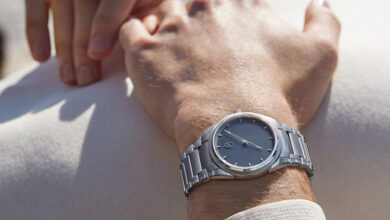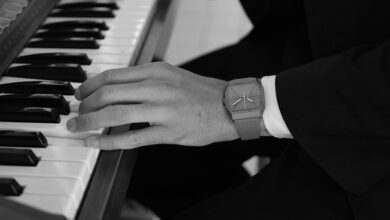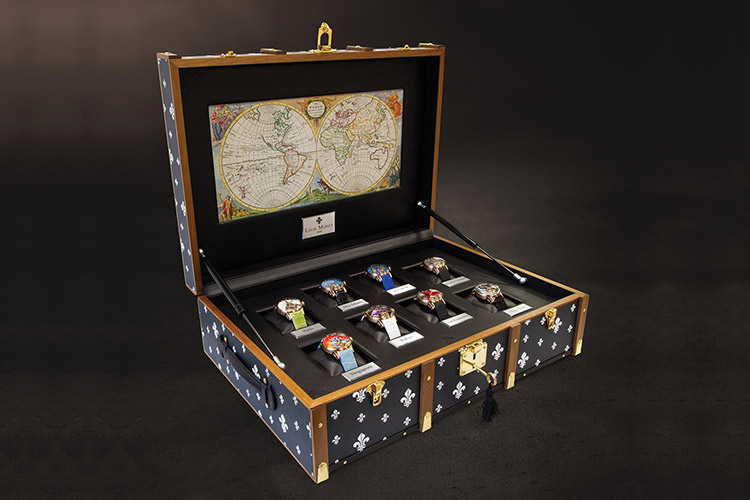
Around the World in Eight Days is a contemporary version of the famous odyssey imagined by Jules Verne, revisited by Jean-Marie Schaller, and sublimated by the art and excellence of watchmaking. To create the dials, Les Ateliers Louis Moinet tapped the specialised skills of GVA Cadrans. This company’s dial-makers have unique expertise in métiers d’art, be that fine miniature painting, precise hand-engraving, the delicate art of marquetry, or making complex jigsaw puzzle dials
The exceptional beauty of these eight dials in the Around the World in Eight Days collection has to do with the originality of the materials chosen, ranging from rock crystal to aventurine, from genuine fragments of history to high-tech materials.
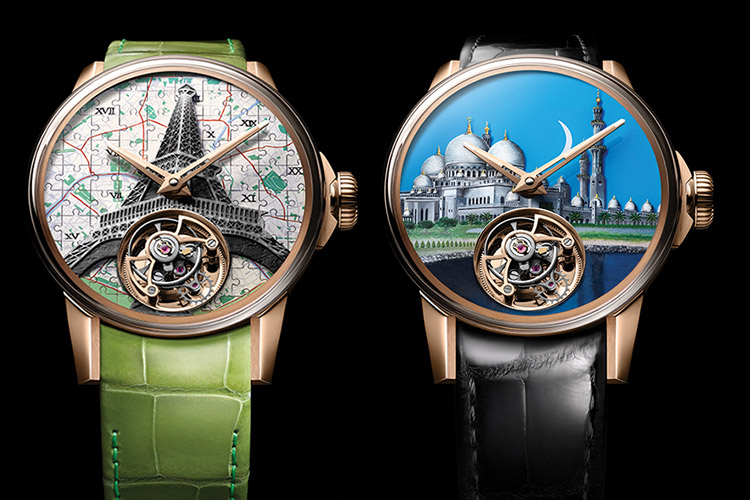
Paris
A jigsaw puzzle dial made up of 81 interlocking pieces and reproducing the map of Paris serves as a backdrop for the Eiffel Tower, which is sculpted by hand from a fragment of an original beam (1889) that had supported the structure for a century before being sampled for a scientific examination.
Abu Dhabi
The Sheikh Zayed Mosque, which appears on the backdrop of a clear blue sky with a moon crescent, has been hand-painted on a rock crystal base to evoke its majesty and pay homage to its pure lines.
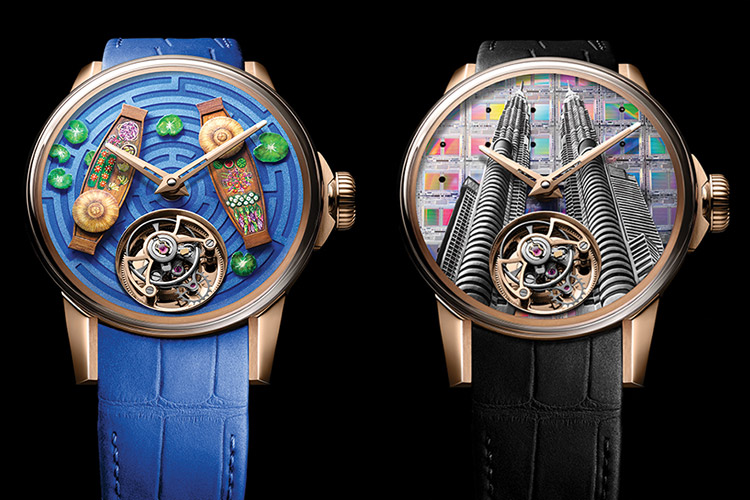
Bangkok
The exceptional skills of the micro-painter come to full flower in this unique piece, which shows a bird’s eye view of Bangkok’s floating market, with colourful, handmade boats, hats, and water lilies over a labyrinthine design, all done with great precision.
Kuala Lumpur
The Petronas Towers, crafted from silver, stand proudly on a silicon dial engraved with microelectronic circuits recalling the building’s key position on the Multimedia Super Corridor.
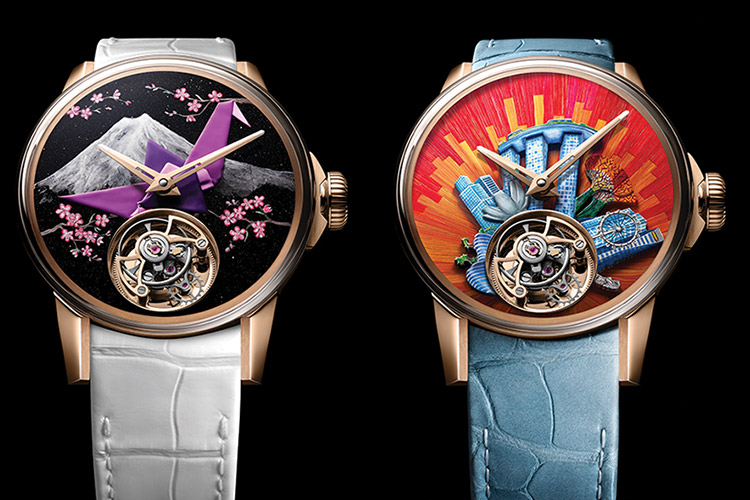
Singapore
The straw marquetry serves as a sprightly composition for Singapore’s iconic buildings and evokes the city’s liveliness. This unusual craft is rooted in a long artistic tradition that demands patience, skill, and a lot of care. Each stem of rye is dyed red or orange, then cut and carefully applied piece by piece to cover the entire dial in such a way as to capitalise on the natural reflections of the straw and create a composition of light.
Tokyo
The origami crane, made from a piece of metallic paper, the hand-painted cherry blossoms, and Mount Fuji, which all appear on a star-spangled aventurine backdrop, are traditional symbols of longevity, fleeting beauty, and perseverance in Japanese culture.
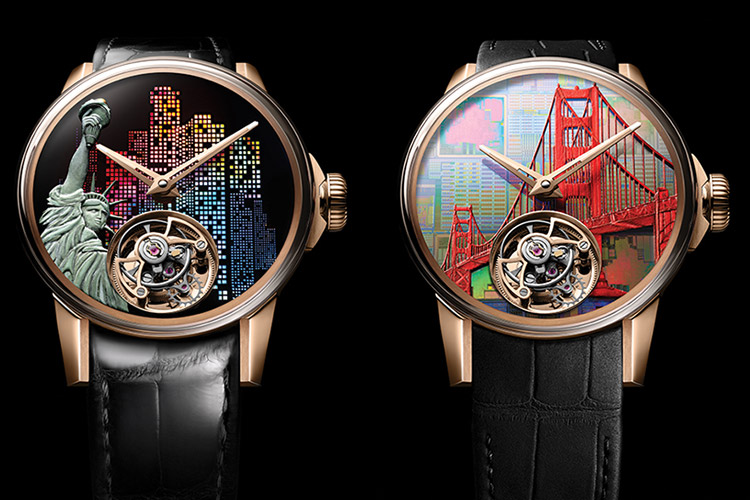
San Francisco
The Golden Gate Bridge, carefully sculpted and hand-painted, is depicted on a silicon wafer etched with microelectronic circuits. This high-tech pattern recalls the nearby Silicon Valley and the architectural design of San Francisco’s cityscape.
New York
To capture the essence of the city that never sleeps, a holographic film on a sapphire crystal base illuminates the buildings, which change colours depending on the viewing angle. The Statue of Liberty, precisely engraved and hand-painted, dominates the scene.
Flying tourbillon
These eight works feature a flying tourbillon inside an off-centre cage, thus defying gravity in a visually striking manner. The hand-wound movement is equipped with a double barrel. The system is called “volte-face,” or upside-down, with the two barrels arranged “head to tail,” allowing them to release their energy simultaneously and delivering 96 hours of power reserve.
Case
These eight timepieces are housed in a 40-millimetre, 18-carat red gold case with fluid and well-defined lines. The domed sapphire crystal, which demanded a lot of technical skill to make, reveals the captivating details laid out on the dial. The open-worked horns perfectly underscore the integration of the leather strap.
These eight exceptional creations are presented in a luxurious, leather-covered wooden trunk, where every detail showcases the exceptional skills of the craftsmen. Inside, elegantly laid out, are the eight timepieces that highlight this journey from Paris to New York. They are accompanied by an old map of the world, drawn by Thomas Jefferys, the famous geographer at the court of King George III. This map dates from 1786, the year Louis Moinet was born.
